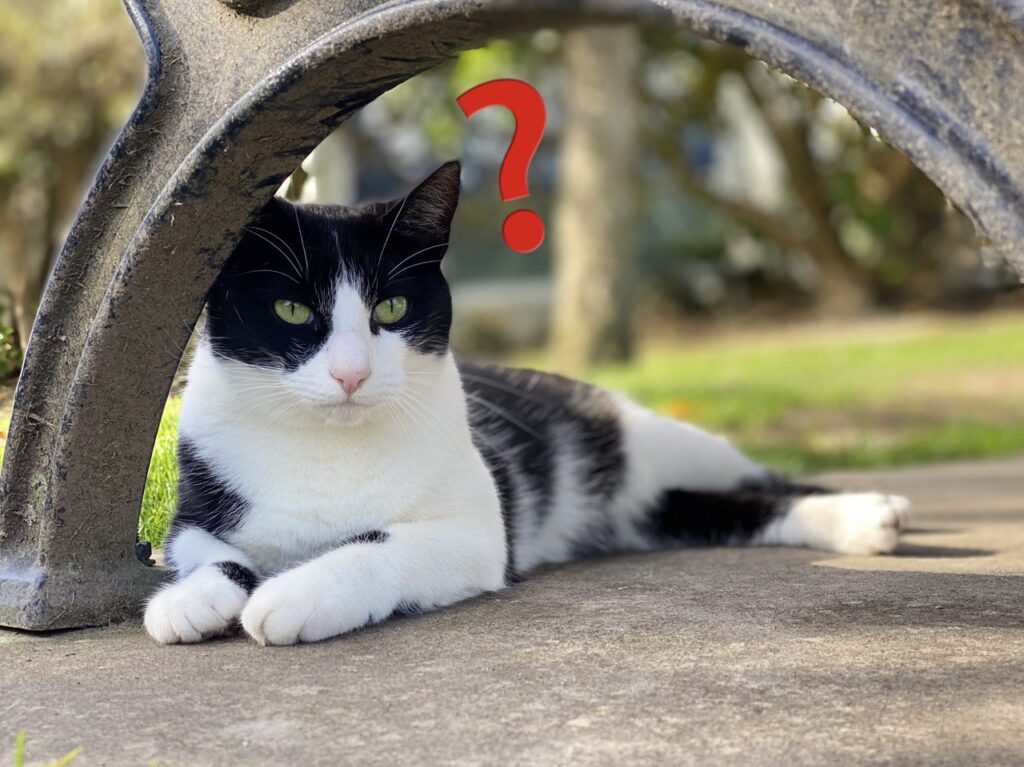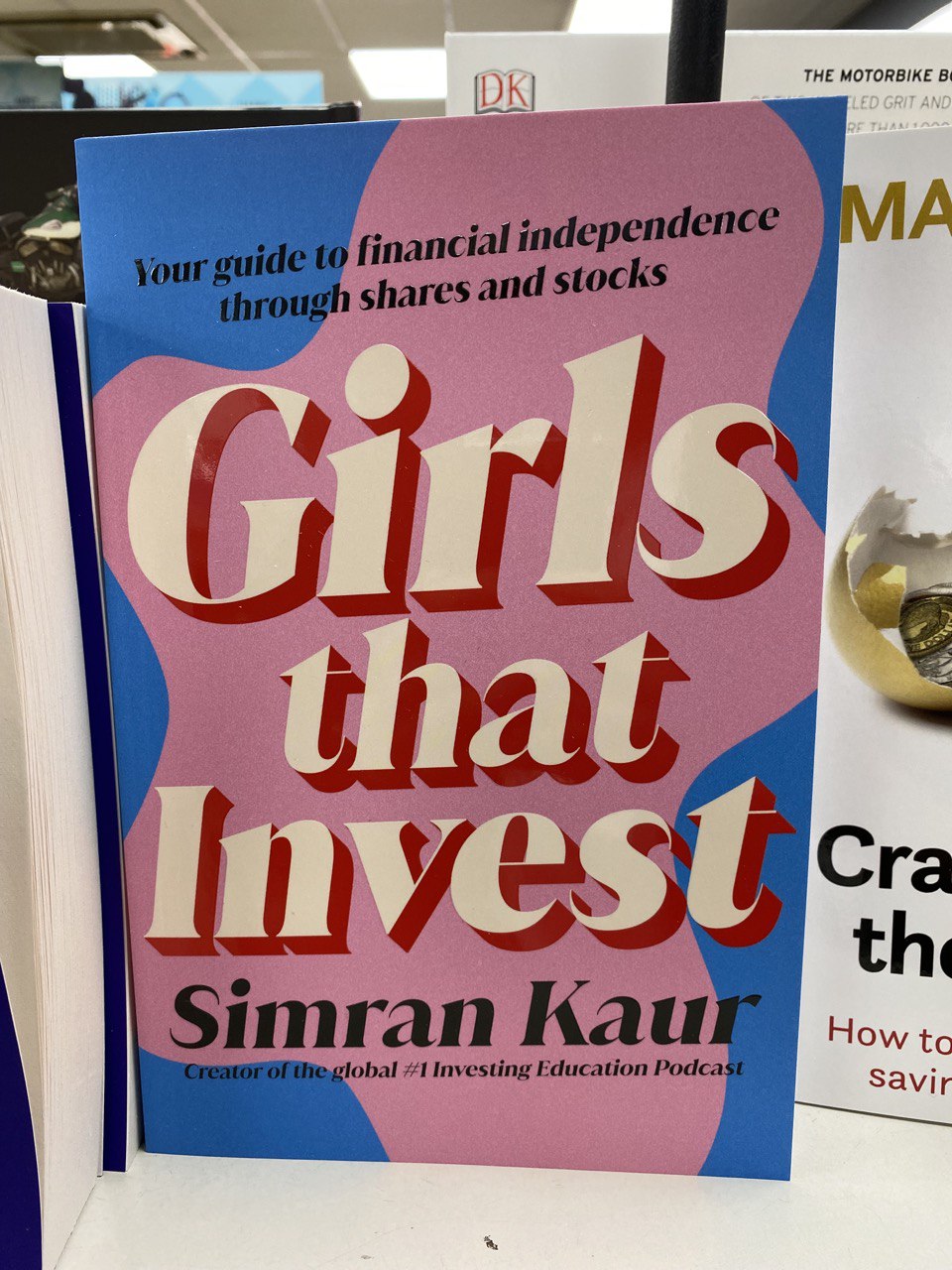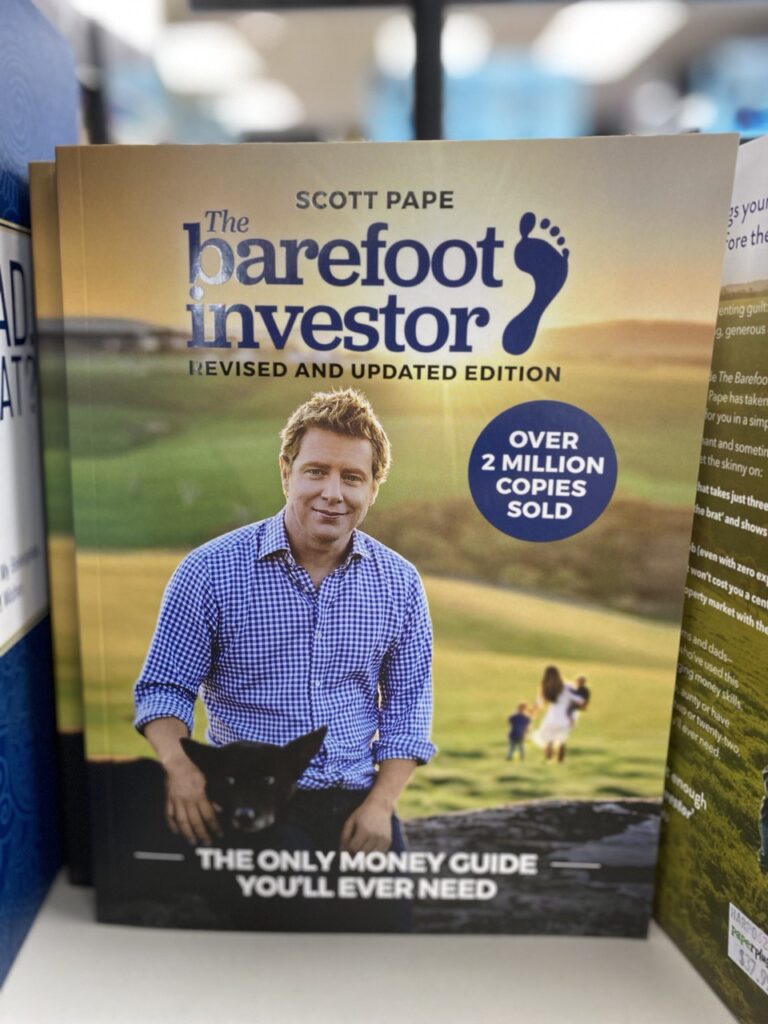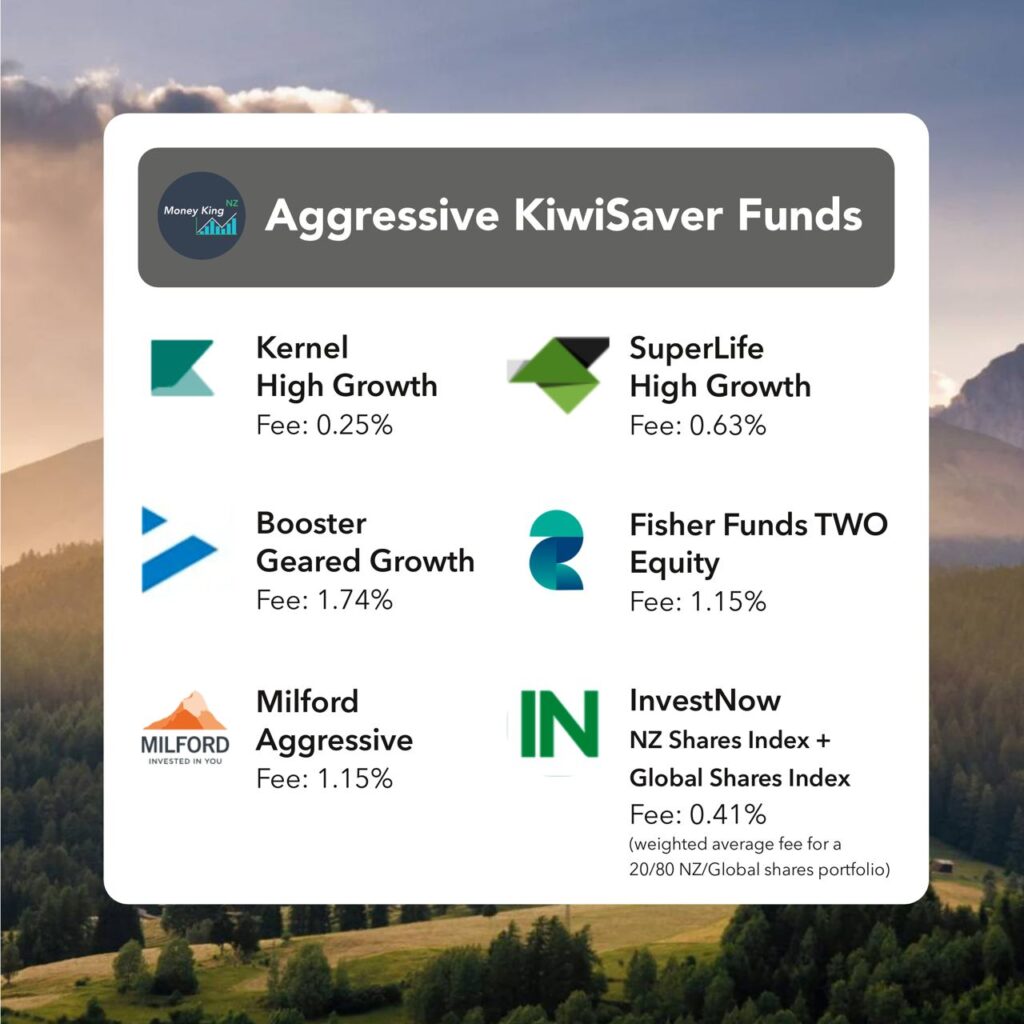
We’re continuing the Ask Money King NZ series with our third Q&A article, where we answer questions from our followers. With this Q&A coming shortly after the government announced (and later abandoned) plans to introduce GST on KiwiSaver management fees, we unsurprisingly had a bit of a KiwiSaver theme with the questions. So in this article we’ll be looking at topics including passive vs active management, Simplicity’s tax leakage issue, and the changes we’d personally like to see made to the KiwiSaver scheme.
The answers in this article have been provided without any knowledge or consideration of the personal circumstances of the person who asked the question. This content should not be taken as financial advice.
In case you missed it – Our previous Q&A article:
– Ask Money King NZ (Winter 2022) – More investing questions answered
1. Should we bring our Super over from Australia and put it into KiwiSaver?
You’ll have to eventually move the money in your Super over to New Zealand at one point or another, assuming you’re intending to retire and spend that money here. So bringing your Super over to KiwiSaver now will allow you to have everything in one place, and save on the chunky admin fees that some Super providers charge.
On the other hand, the money you transfer can’t be withdrawn for your first home, or if you permanently leave NZ for another country other than Australia. Your investments in Super also tend to be taxed more favourably than in KiwiSaver. In making the decision, you might also need to consider whether your Super is providing you with any insurance cover.
Overall there aren’t any major pros or cons either way. Personal preference and what you’re most comfortable with is more important than worrying about details like fees and taxes, which are likely small issues in the grand scheme of things.
2. What’s the best book to learn about investing money for someone that’s just starting out?
We prefer New Zealand authors as their content tends to be more relevant to Kiwi investors. Rich Enough from Mary Holm isn’t 100% specific to investing, but it’s a good all round personal finance book that explains investing concepts in an easy to read manner. Otherwise head to your local bookstore and look for books from the likes of Frances Cook or Sim from Girls That Invest.


Overseas books can also be great, but keep in mind they can refer to concepts and products that don’t necessarily apply in a NZ context.


3. Passive or active management?
We prefer passively managed funds because:
- Fees – They’re the one constant that eat away at your returns. The fees for passively managed funds are usually lower, leaving more of your money invested and compounding over time.
- Performance – Most active fund managers fail to consistently outperform the market over the long run. While some active managers have delivered solid past returns, there’s no guarantee they’ll continue to replicate those returns year after year.
But we aren’t against actively managed funds either. There’s many perfectly valid reasons to invest in one such as:
- Investment strategy – You might have a preference for a particular actively managed fund’s investment strategy. For example, they might use leverage or invest in some alternative asset which isn’t typically available in a passive fund.
- Ethical views – A particular actively managed fund might better align with your ethical views than the passively managed funds on offer.
- Performance – You believe the fund will continue to outperform the market over the long-term.
But your own personal investing behaviours (like investing consistently through good times and bad) will likely have a greater impact than choosing the best one between the two. So don’t worry about the passive vs active debate too much!
There’s nothing stopping you from investing in both either, even for your KiwiSaver investments. For example, InvestNow’s KiwiSaver scheme, which allows you to select from a mix of over 30 passive and active funds, reported that many of their members are splitting their KiwiSaver investments across the two investment strategies.
A quarter of those invested in the Foundation Series Growth Fund – which is based around having passive exposures to shares – also invest in the Milford Active Growth Fund, suggesting many InvestNow KiwiSaver Scheme members want to mix index/passive and active investing styles.
InvestNow
4. What’s the tax leakage issue with Simplicity KiwiSaver?
The main way that tax leakage comes about is through the international shares that a fund holds. When these international companies pay dividends, a fund has to pay tax on those dividends. This includes a 15% withholding tax that goes to the foreign government of where the dividend paying company is domiciled. For example, when Apple pays a dividend, your fund has to pay withholding tax to the US government.
A tax efficient fund would hold their international shares directly, or through another tax efficient vehicle. This allows the fund to claim that 15% foreign withholding tax as a tax credit to reduce the amount of tax payable to our own NZ government.
However, Simplicity’s funds invest in international shares through an Australian domiciled fund. As a result they can’t claim the tax credits relating to those foreign dividends, effectively meaning Simplicity’s funds pay more tax than necessary. That extra tax then gets passed onto their investors, and is estimated to cost Growth fund investors 0.15% per year.
Further Reading:
– InvestNow Foundation Series vs Simplicity funds – Tax leakage an issue?
5. Due to Simplicity’s tax leakage issue, would you switch KiwiSaver?
Not necessarily. While it does make their funds more expensive than what their headline management fee of 0.31% suggests, there’s more to consider than just fees and tax efficiency, such as:
- Ethical considerations – Their funds exclude companies involved in things like fossil fuels, alcohol, tobacco, gambling, civilian firearms, adult entertainment, military weapons, and nuclear weapons. Great if you’re looking to avoid those industries.
- Underlying investments – Simplicity invests in initiatives like build-to-rent housing and mortgage lending, which some people like given they help people get into stable housing.
- The fund manager itself – You may like Simplicity in general, perhaps for the fact that they’re not for profit and donate to charity.
- Future plans – The ongoing growth and increasing scale of their funds will enable Simplicity to look at moving to more tax efficient solutions for their international shares. This is apparently something they’re currently working on.
But if you’re purely after the lowest fees/most tax efficient KiwiSaver fund then check out our article below comparing low cost Growth and Aggressive funds (featuring Simplicity, InvestNow, Kernel, and BNZ).
Further Reading:
– What’s the best low cost Growth/Aggressive KiwiSaver fund?
6. Are you on YouTube?
Unfortunately not. We don’t have the right resources or video editing and production skills, and don’t want to be putting out poor quality videos. So our time is probably better spent writing comprehensive articles rather than trying to produce content on lots of different platforms!
If you’re looking for NZ personal finance YouTubers to follow, not all of them are great (as our below article suggests), but the videos from Henk Hustle, Joshua Wang, and Brent Coleman are reliable and their topics are fairly similar to ours.
Further Reading:
– Should you quit KiwiSaver? Our response to YouTube KiwiSaver advice
7. How do you make the most of KiwiSaver on your kid’s behalf (before they’re 18)?
For under 18s, KiwiSaver is essentially just a managed fund with restrictions on when you can withdraw the money, given they don’t qualify for the financial incentives. So there isn’t really anything you can do for kids that’s specific to KiwiSaver.
But perhaps the most important thing you can do for them is to start investing early, as kids typically have the benefit of heaps of time ahead of them for their investments to grow and compound.
You don’t have to invest in KiwiSaver to achieve compounding returns. A non-KiwiSaver investment will be just as good, and will also provide more flexibility on when you can withdraw the money. For example, it can be withdrawn to use for education, travel or start a business, while KiwiSaver is locked in until buying a first home or retirement.
Further Reading:
– How to invest for kids in New Zealand
8. Is it by law that every employer must provide employer contributions to KiwiSaver?
Yes and no. The KiwiSaver Act requires employer contributions to be paid on top of your gross salary or wages. However, that same act allows employer contributions to be deducted from your salary/wages if it’s agreed to between you and your employer – otherwise known as a total remuneration arrangement.
There’s just a few exceptions where total remuneration can’t be applied, for example, for people on minimum wage, as total remuneration would result in someone getting paid below the minimum.
9. What’s the benefit to the employee if you opt for a total remuneration arrangement?
There’s not really any benefit to the employee, and you probably wouldn’t actively opt-in to a total remuneration arrangement. But rather it’s offered by many employers as standard terms in their contracts, so either you’ll have to accept it or find somewhere else to work!
However, arguably not every aspect of total remuneration is bad. It ensures that two people doing the same job get paid the same regardless of whether they’re a KiwiSaver member or not. It might also be suitable to people on certain remuneration models, for example, people who have earnings heavily based on commission and have their pay (and therefore KiwiSaver contributions) fluctuating from month to month.
10. I want to switch to an agressive KiwiSaver fund but it has a minimum investment timeframe of 5 years? Is that too risky for someone in their mid 20s saving for a house?
We can’t give you specific advice on what fund is best for you, but a fund’s recommended minimum investment timeframe (which can be found in the Product Disclosure Statement) is always something you should try to adhere to. So in general if your house purchase is minimum 5 years away and you have a high risk appetite, then perhaps an aggressive fund will be ok.
But if your house purchase is closer than that, then perhaps a more conservative fund would be more suitable. There’s nothing stopping you from picking an aggressive fund, but the volatility of such a fund could cut into your house deposit. And having less than 5 years might not give you enough time for the fund to recover (unless you delay your house purchase).
Overall, whatever you do, you should always pick a KiwiSaver fund type that aligns to your goals, investment timeframe, and risk tolerance.
Further Reading:
– KiwiSaver 101 – How does KiwiSaver fit into your investment portfolio?
11. Why don’t more KiwiSaver providers offer high growth/aggressive funds?
A big factor is likely to be around investor education. Most members aren’t even aware aggressive KiwiSaver options exist and/or are happy with plonking their money into a growth fund for their long-term investing needs. Less demand means fewer providers offering such a fund.
It also doesn’t help that there’s not much innovation across traditional providers like banks. They can probably rely on the fact that they’ll always have massive market share (and fee revenue) due to their brand. Hopefully that’ll change as KiwiSaver balances grow and investors become more engaged, but in the meantime there’s still a decent selection of aggressive funds out there such as the following:

12. How are managed funds regulated? How safe is my money?
The Financial Markets Authority (FMA) is the regulator who helps shape and enforce the legislation and rules around NZ’s financial markets, including managed funds. One key piece of legislation they enforce is the Financial Markets Conduct Act 2013.
When it comes to managed funds, licensed retail fund managers in NZ are required to have investors’ money and assets held by an independent custodian. That way the fund manager doesn’t even touch your money, and it’s kept seperate from them in the case they went bust. Fund managers also have supervisors who oversee their operations, making sure they’re acting according to regulations and investor interests.
So the key thing to keep in mind is that you’re investing through a fund manager, not in a fund manager. Therefore your money is safe if your fund manager shuts down. However, the regulation generally won’t protect you from losses resulting from market downturns or the fund manager making bad investment decisions!
Further Reading:
– What happens to your money if InvestNow or Sharesies go bust?
13. I have a KiwiSaver and investment fund, both Growth with Simplicity. Is this silly and not “diverse” enough?
Not silly at all in our opinion. Within Simplicity’s Growth fund you have:
- NZ shares
- Australian shares
- International shares
- NZ bonds
- International bonds
- Mortgage lending
- Private equity
- Build-to-rent property
Altogether your money is spread across thousands of assets, so the one fund is more than enough from an asset diversification perspective. You can check Simplicity’s Where in the world is my money calculator (works on desktop only) to see exactly which assets your money gets invested in. And as we discussed in the previous question, there’s no need to diversify your money across different fund managers either.
14. What’s the best way to treat savings outside KiwiSaver? Fixed term? PIE?
Having some savings and investments outside of KiwiSaver can be a good idea, given they won’t be restricted in terms of when you can withdraw the money. As for how you should treat those savings, there’s no definitive best way. But rather it comes down to various factors like when you need the money.
For example, if you don’t need that money for several years then you can consider shares, or funds that invest mainly in shares (like growth or aggressive funds), given these offer higher potential returns over the long-term compared to sticking it in a savings account. If you don’t know where to start, then KiwiSaver providers will usually also offer non-KiwiSaver funds which you can look into.
But if you need the money in the short-term, it’s usually better to keep it in conservative assets like bank deposits, as that’ll protect your money from the volatility of the sharemarkets. We cover the factors you need to consider in choosing an investment/savings product in more detail in the articles below:
Further Reading:
– How to invest $1k/$10k/$100k in New Zealand
– Bonus Saver vs Notice Saver vs Term Deposit – Which savings product is right for you?
15. I’m 21 and just got my residency. What would be the best way to start KiwiSaver and use it for my first home?
Probably the most important thing you can do is to start contributing as soon as possible, so you’ll earn the employer and government contributions. This will also help you qualify for first home withdrawals and the first home grant, both of which require you to contribute to KiwiSaver for at least 3 years.
The second thing you should do is to choose the right type of fund (e.g. cash/conservative/balanced/growth/aggressive) for your investment timeframe and risk tolerance. That’ll ensure your money is invested with the right risk and reward balance for your circumstances.
The above two will make a much greater impact than worrying about things like which specific provider to go with.
Further Reading:
– Can’t afford a house? 5 ways to help you get on the ladder
16. What changes would you like to see made to KiwiSaver?
An issue with KiwiSaver is that a big chunk of the population aren’t contributing enough or not at all. So we’d like to see some small changes to keep the financial incentives compelling such as:
- Government contributions – Increase the government contribution alongside inflation. $521 won’t be as much of an incentive in 10 years’ time as it is today.
- Under 18s – Give under 18s incentives to contribute as starting early provides the best results. For example, reintroduce the $1,000 kickstart, or allow under 18s to at least get a partial government contribution.
- Total remuneration – Disallow total remuneration, so that all employees have employer contributions as a clear benefit of contributing. Perhaps allow employees and employers to be able to contribute a fixed dollar amount (instead of a percentage), as that could smooth out the contributions for someone with a fluctuating income.
Outside of the financial incentives we’d like to see:
- Education – More education is important, as there’s so many myths and misconceptions surrounding KiwiSaver, which results in people making poor decisions around the scheme.
- Sidecar funds – The ability for any extra contributions you make over x% to go into a sidecar investment fund which you can withdraw from at any time. This could help improve people’s general savings and investing habits, as it’s automated and the money you contribute to a sidecar fund wouldn’t even touch your bank account.
With these two initiatives, some of the billions sitting in term deposits can hopefully go into more productive uses like providing capital for businesses, and increasing the scale of managed funds, perhaps leading to increased competition and lower fees.
What changes would you make? Let us know in the comments.
Conclusion
Thanks to all who put a question through for this article. We got way more than expected for this one! Keep an eye on our Instagram for the next Q&A in December!
Follow Money King NZ
Join over 7,500 subscribers for more investing content:
Disclaimer
The content of this article is based on Money King NZ’s opinion and should not be considered financial advice. The information should never be used without first assessing your own personal and financial situation, and conducting your own research. You may wish to consult with an authorised financial adviser before making any investment decisions.
Thanks! Nice to see what your ideas are for changes to Kiwisaver. Fingers crossed there will be some appetite for positive improvements to be made. 🙂
Thank you. The government is already looking into some tweaks, so perhaps we’ll see some changes come in the next couple of years.